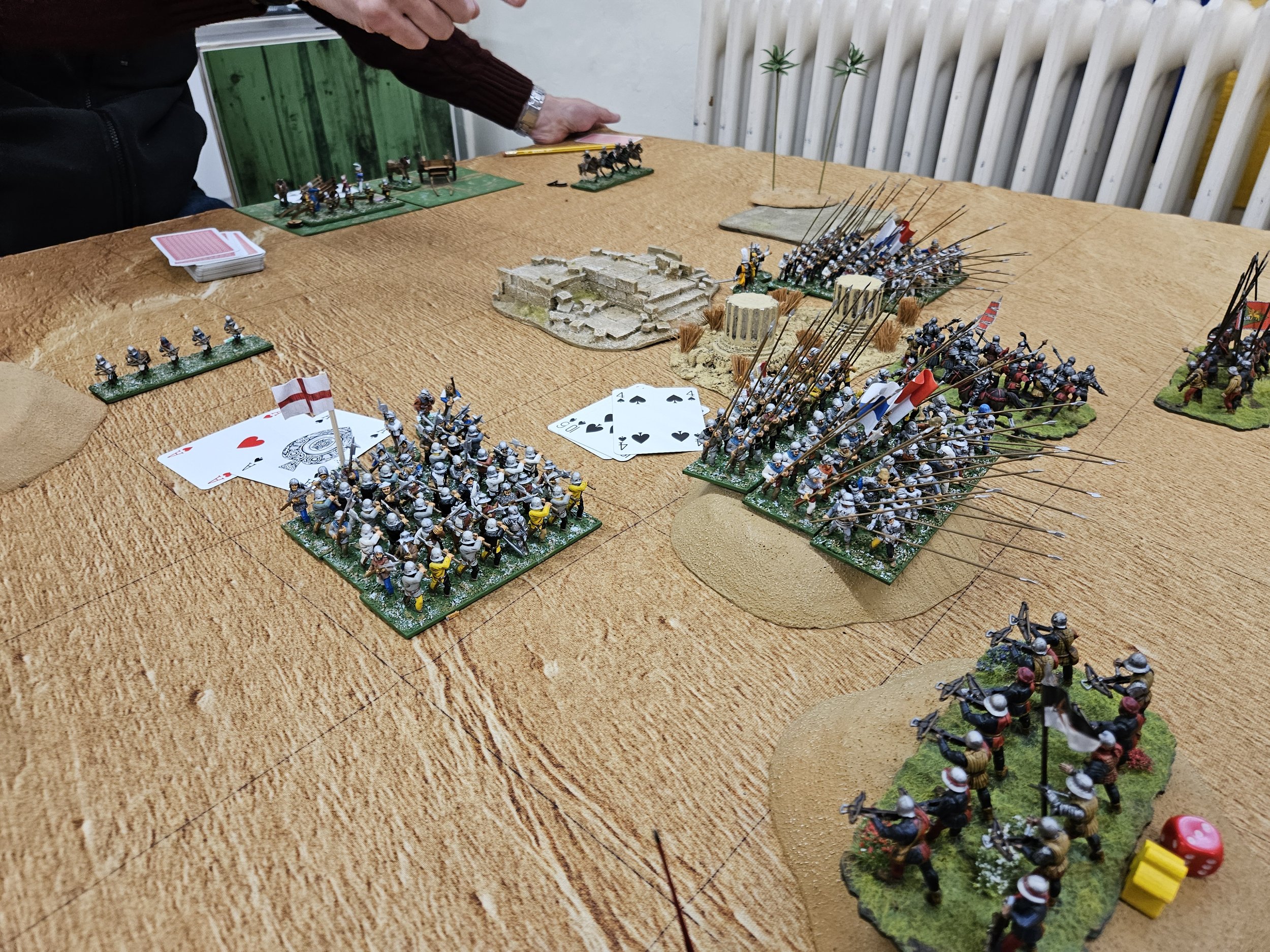Operation Market Larden X
/It seems extraordinary, but the Operation Market Larden Lardy Day in Evesham has reached its 10th manifestation i.e. leaving aside COVID lockdowns, it’s now ten years old…and I’ve been to every one.
This year’s event was the usual cornucopia of excellently run Lardy games, all played in the very best of Lardy spirits. Unfortunately real life commitments kept me from both the Friday night pre’s and the Saturday night meal, but I very much enjoyed the day itself.
Before I talk about the games I participated in, here’s a quick table-by-table look at what was on offer. All the pics are taken from first thing in the morning, so are devoid of any action, but just look at the set-ups!
In the morning, I played in Sid’s excellent Blood on Fallen Snow scenario for When the Last Sword is Drawn or Banzai Bonkers for short!
I partnered with Gareth, and our task was to secure several treasures at a shrine nominally under protection.
In short, although we succeeded in our mission and slaughtered the enemy, we technically lost the game as our opposition gained more on or honour than we did: something my partner in crime was largely responsible for as every duel he was in consisted of his Dirty Tricks technique verses the honourable conduct of the enemy!
I was so caught up in the action that I neglected to take more than a couple of shots of the game. Here they are:
Superbly created and umpired by Sid, I cannot recommend When the Last Sword is Drawn enough!
I’ll cover my afternoon game in the next post…









































































































































